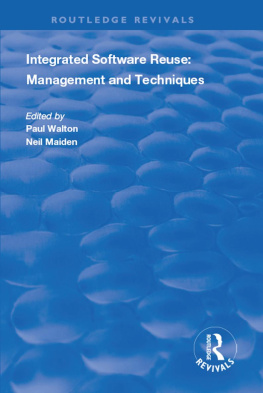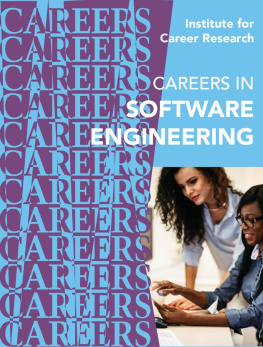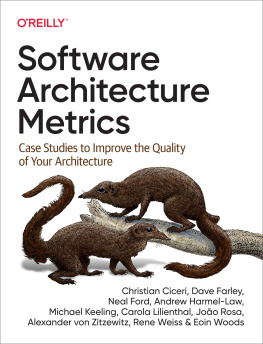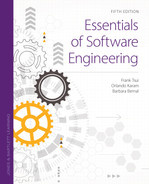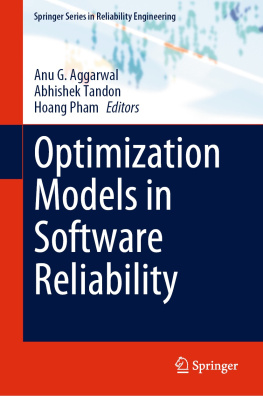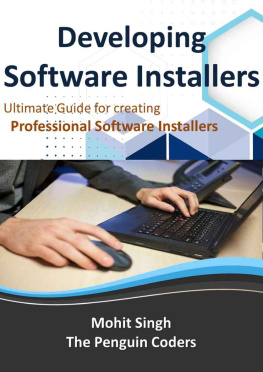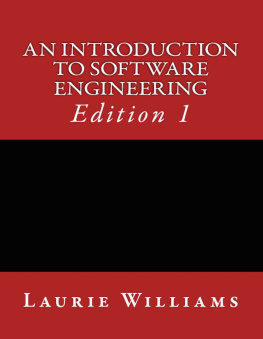Twenty Techniques for More Effective Software Review and Inspection
Yang-Ming Zhu
Software Reading Techniques: Twenty Techniques for More Effective Software Review and Inspection
Yang-Ming Zhu
Solon, Ohio
U S A
ISBN-13 (pbk): 978-1-4842-2345-1 ISBN-13 (electronic): 978-1-4842-2346-8 DOI 10.1007/978-1-4842-2346-8
Library of Congress Control Number: 2016959789
Copyright 2016 by Yang-Ming Zhu
This work is subject to copyright. All rights are reserved by the Publisher, whether the whole or part of the material is concerned, specifically the rights of translation, reprinting, reuse of illustrations, recitation, broadcasting, reproduction on microfilms or in any other physical way, and transmission or information storage and retrieval, electronic adaptation, computer software, or by similar or dissimilar methodology now known or hereafter developed. Trademarked names, logos, and images may appear in this book. Rather than use a trademark symbol with every occurrence of a trademarked name, logo, or image we use the names, logos, and images only in an editorial fashion and to the benefit of the trademark owner, with no intention of infringement of the trademark.
The use in this publication of trade names, trademarks, service marks, and similar terms, even if they are not identified as such, is not to be taken as an expression of opinion as to whether or not they are subject to proprietary rights.
While the advice and information in this book are believed to be true and accurate at the date of publication, neither the authors nor the editors nor the publisher can accept any legal responsibility for any errors or omissions that may be made. The publisher makes no warranty, express or implied, with respect to the material contained herein.
Managing Director: Welmoed Spahr
Acquisitions Editor: Robert Hutchinson
Developmental Editor: Laura Berendson
Technical Reviewer: Weidong Liao
Editorial Board: Steve Anglin, Pramila Balen, Laura Berendson, Aaron Black, Louise Corrigan, Jonathan Gennick, Robert Hutchinson, Celestin Suresh John, Nikhil Karkal, James Markham, Susan McDermott, Matthew Moodie, Natalie Pao, Gwenan Spearing
Coordinating Editor: Rita Fernando
Copy Editor: Angela Warner
Compositor: SPi Global
Indexer: SPi Global
Cover Image: Designed by Pio_pio - Freepik.com
Distributed to the book trade worldwide by Springer Science+Business Media New York, 233 Spring Street, 6th Floor, New York, NY 10013. Phone 1-800-SPRINGER, fax (201) 348-4505, e-mail orders-ny@springer-sbm.com , or visit www.springeronline.com . Apress Media, LLC is
a California LLC and the sole member (owner) is Springer Science + Business Media Finance Inc (SSBM Finance Inc). SSBM Finance Inc is a Delaware corporation. For information on translations, please e-mail rights@apress.com , or visit www.apress.com .
Apress and friends of ED books may be purchased in bulk for academic, corporate, or promotional use. eBook versions and licenses are also available for most titles. For more information, reference our Special Bulk SaleseBook Licensing web page at www.apress.com/bulk-sales . Any source code or other supplementary materials referenced by the author in this text is available to readers at www.apress.com . For detailed information about how to locate your
books source code, go to www.apress.com/source-code/ .
Printed on acid-free paper
To Xiao-Hong, Harold, Alex, and the rest of my family.
About the Author ............................................................................ xiii
About the Technical Reviewer ......................................................... xv
Acknowledgments ......................................................................... xvii
Introduction .................................................................................... xix
Chapter 1: Introduction .................................................................. 1
Chapter 2: Software Review Procedures ........................................ 7
Chapter 3: Basic Software Reading Techniques ........................... 21
Chapter 4: Scenario-Based Reading Techniques .......................... 35
Chapter 5: Requirements Reading Techniques ............................. 69
Chapter 6: Design Reading Techniques ........................................ 77
Chapter 7: Code Reading Techniques ......................................... 103
Chapter 8: Conclusion ................................................................ 119
Index .............................................................................................. 123
About the Author ............................................................................ xiii
About the Technical Reviewer ......................................................... xv
Acknowledgments ......................................................................... xvii
Introduction .................................................................................... xix
Chapter 1: Introduction .................................................................. 1
1.1 Software Quality, Software Reviews and Inspections .................... 1
1.2 About This Book ............................................................................. 4
1.2.1 Organization of This Book ............................................................................. 4
1.2.2 Intended Audience and How to Use This Book ............................................. 5
1.3 References ..................................................................................... 5
Chapter 2: Software Review Procedures ........................................ 7
2.1 A Generic Software Review Procedure........................................... 7
2.2 Fagan Inspection and Extensions ................................................... 8
2.2.1 Fagan Inspection .......................................................................................... 8
2.2.2 Extensions to Fagan Inspection .................................................................. 11
2.3 Active Design Review and Extensions .......................................... 13
2.3.1 Active Design Review ................................................................................. 13
2.3.2 Extensions to the Active Design Review ..................................................... 15
2.4 Other Types of Reviews ................................................................ 15
2.5 Factors Impacting Software Reviews........................................... 16
CONTENTS
2.6 Summary ...................................................................................... 18
2.7 References ................................................................................... 19
Chapter 3: Basic Software Reading Techniques ........................... 21
3.1 Introduction to Software Reading ................................................ 21
3.1.1 De nition of Software Reading ................................................................... 22


